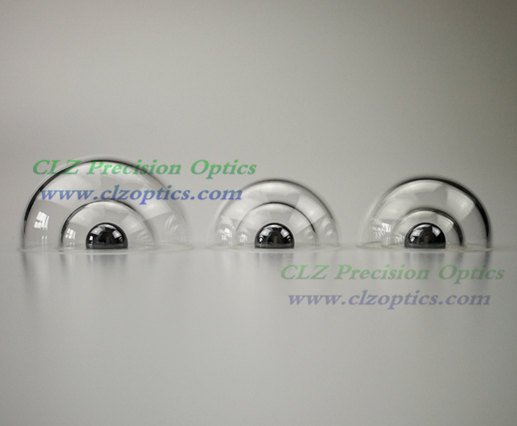Types of Optical Domes: A Comprehensive Guide
Optical domes come in various shapes and materials, each designed to meet specific requirements and application needs. These specialized components play a crucial role in protecting optical systems while maintaining optical performance. In this article, we will explore the different types of optical domes, their unique features, and their suitability for various applications.

Spherical Domes:
Spherical domes are the most common type of optical domes. They have a shape similar to a segment of a sphere and provide a wide field of view. Spherical domes offer excellent optical clarity and minimal distortion, making them suitable for imaging and sensing applications. They can be manufactured using materials such as optical glass or optical-grade polymers, depending on the desired properties and application requirements.
Hemispherical Domes:
Hemispherical domes have a half-sphere shape and are widely used in applications that require a broad field of view and protection against environmental factors. They offer optical clarity and strength, making them suitable for aerospace, defense, and marine applications. Hemispherical domes are commonly made from materials like glass or robust optical polymers to withstand challenging conditions.
Aspherical Domes:
Aspherical domes are non-spherical in shape and have a varying curvature across their surface. These domes are designed to minimize aberrations and improve optical performance. Aspherical domes are commonly used in applications that demand high precision and low distortion, such as advanced imaging systems and laser technology. The manufacturing of aspherical domes requires advanced machining and polishing techniques to achieve the desired shape and optical accuracy.
Custom-shaped Domes:
In certain applications, custom optical domes may be required to meet specific design requirements. These domes can have unique shapes, such as ellipsoidal, toroidal, or freeform geometries. Custom-shaped domes are often used in specialized optical systems, where traditional spherical or hemispherical domes may not provide the desired optical performance. The manufacturing of custom-shaped domes involves precise machining and molding techniques to achieve the desired shape and optical characteristics.
Materials:
Optical domes can be made from a variety of materials, each with its unique properties and advantages. Optical-grade glass, such as borosilicate or fused silica, offers excellent optical clarity, high temperature resistance, and resistance to environmental factors. Glass domes are commonly used in demanding applications where optical performance is critical. Optical polymers, such as acrylic or polycarbonate, offer lightweight construction, impact resistance, and ease of customization. Polymer domes are suitable for applications that require lightweight components or where cost considerations are important.
The choice of material depends on factors such as the desired optical performance, mechanical strength, environmental resistance, and cost considerations. Each material has its specific advantages and limitations, and careful consideration should be given to select the most suitable material for the intended application.
In conclusion, optical glass dome come in various types, including spherical, hemispherical, aspherical, and custom-shaped domes. They are made from materials such as optical glass or optical polymers, depending on the specific application requirements. The selection of the appropriate type and material of the dome is crucial to ensure optimal optical performance, environmental protection, and durability. By understanding the different types of optical domes available, designers and engineers can make informed decisions and choose the most suitable domes for their optical systems.
520
0
0


Comments
All Comments (0)